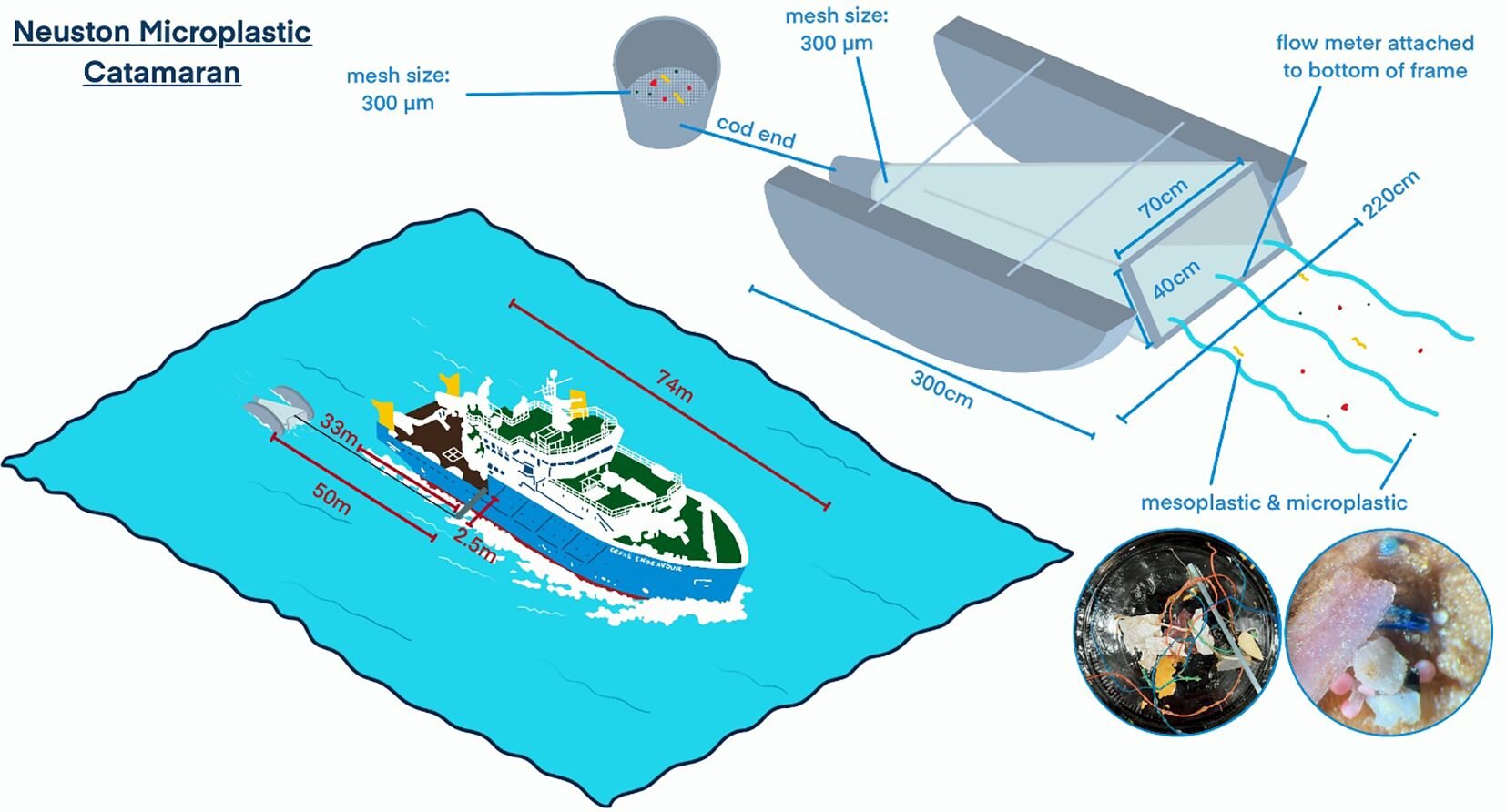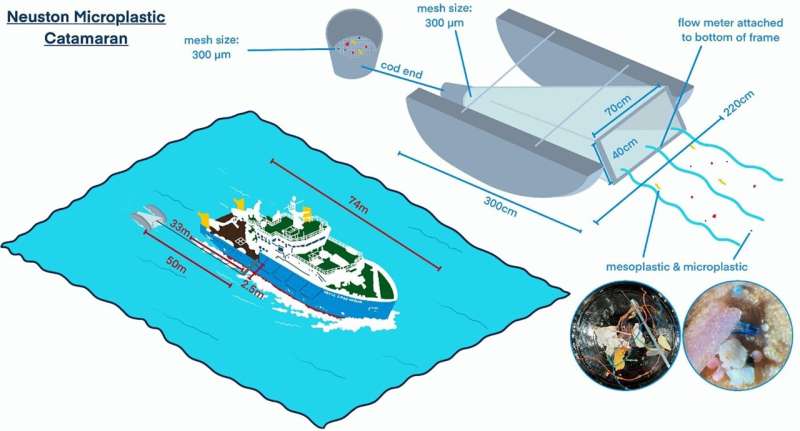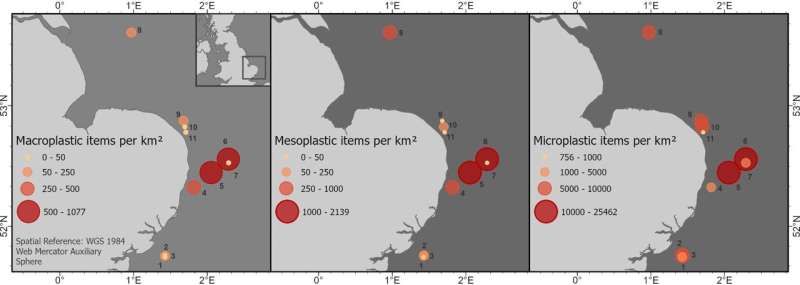

Microplastic pollution in the world’s oceans is often illustrated through evocative images of wildlife caught within large items floating on the surface, or microplastics blending in among the sand on otherwise pristine beaches.
The mass of plastics supplied to the ocean each year is vast, potentially up to 12.7 million tons through riverine input in addition to marine-based sources from fishing, aquaculture and shipping industries; yet, that which is observed on the surface does not match accordingly. Consequently, there are missing microplastic sinks in the marine realm.
New research, published in Frontiers in Marine Science, has identified the North Sea as home to some of these plastic sinks.
Dr. Danja Hoehn and colleagues at the Center for Environment, Fisheries and Aquaculture Science, U.K., collected microplastic data in 2022 using a specialized Neuston Microplastic Catamaran (a floating catamaran with a mechanical flowmeter and mesh to capture plastics) on the ocean surface, as this is where microplastics first enter the ocean from terrestrial runoff or ship-based sources before sinking to the seabed.
The researchers found high microplastic concentrations in the coastal Southern Bight of the North Sea, peaking at over 25,000 items per square kilometer (items km-2, with a mean of ~8,700 items km-2), compared to nearby offshore Scottish (mean ~4,500 items km-2) and north-east Atlantic (mean ~3,200 items km-2) waters.
Compositionally, most of the microplastics (up to 5 mm in size) were fragments of polyethylene (67%; used in everyday items such as shopping bags, water bottles and children’s toys), polypropylene (16%; plastic packaging, car parts and textiles, like sports clothing) and polystyrene (8%; packaging, electrical appliance housings for items including microwaves and fridges, as well as disposable medical hardware).
Mesoplastics (5 to 25 mm) and macroplastics (over 25 mm) were present at lower concentrations of ~2,000 items km-2 and ~1,000 items km-2 respectively, predominantly comprised of fragments and filaments derived from the breakdown of larger plastics, but also including microbeads and film.
Though use of microbeads in cosmetic and personal care products has been banned in the U.K. since 2018, their persistence hints at transport from other countries into the area by ocean currents. Across all of the marine litter, 11 colors were identified in the plastics, with most being white and attributable to plastic bags.

Microplastic and mesoplastic pollution hotspots were identified just off the coast of East Anglia, where the aforementioned maximum concentrations were identified at two sites within close proximity.
Despite spatial differences in microplastic concentration, their presence throughout the study area highlights the scale of the issue, as well as the influence of currents bringing plastic litter from other countries into these accumulation zones.
Having said this, the U.K. hotspot mean concentrations are still much lower than have previously been observed elsewhere, including ~254,000 items km-2 off the coast of northwest Spain in 2017, ~40,000 items km-2 off the west coast of Portugal in 2019 and ~1 million items km-2 in the Canary Islands in 2024.
Tackling plastic pollution in these areas is an ongoing mission, with a number of national and international initiatives in motion. These include the UK’s Marine Strategy, which aims to develop a microplastics indicator in marine sediments; the North-East Atlantic Environmental Strategy, focusing on reducing and preventing inputs of marine litter; and the UN Environmental Agency, which hopes a legally binding movement will end plastic pollution by 2040.
With the ever-increasing demand for plastics currently exceeding 400 million tons annually, understanding plastic contamination in Earth’s oceans is vital in order to implement strategies to protect it for generations to come.
More information:
Danja P. Hoehn et al, Microplastics in sea surface waters in the Southern Bight of the North Sea, Frontiers in Marine Science (2024). DOI: 10.3389/fmars.2024.1430307
© 2024 Science X Network
Citation:
Microplastic hotspots forming in offshore UK North Sea, researchers find (2024, September 30)
retrieved 30 September 2024
from https://phys.org/news/2024-09-microplastic-hotspots-offshore-uk-north.html
This document is subject to copyright. Apart from any fair dealing for the purpose of private study or research, no
part may be reproduced without the written permission. The content is provided for information purposes only.